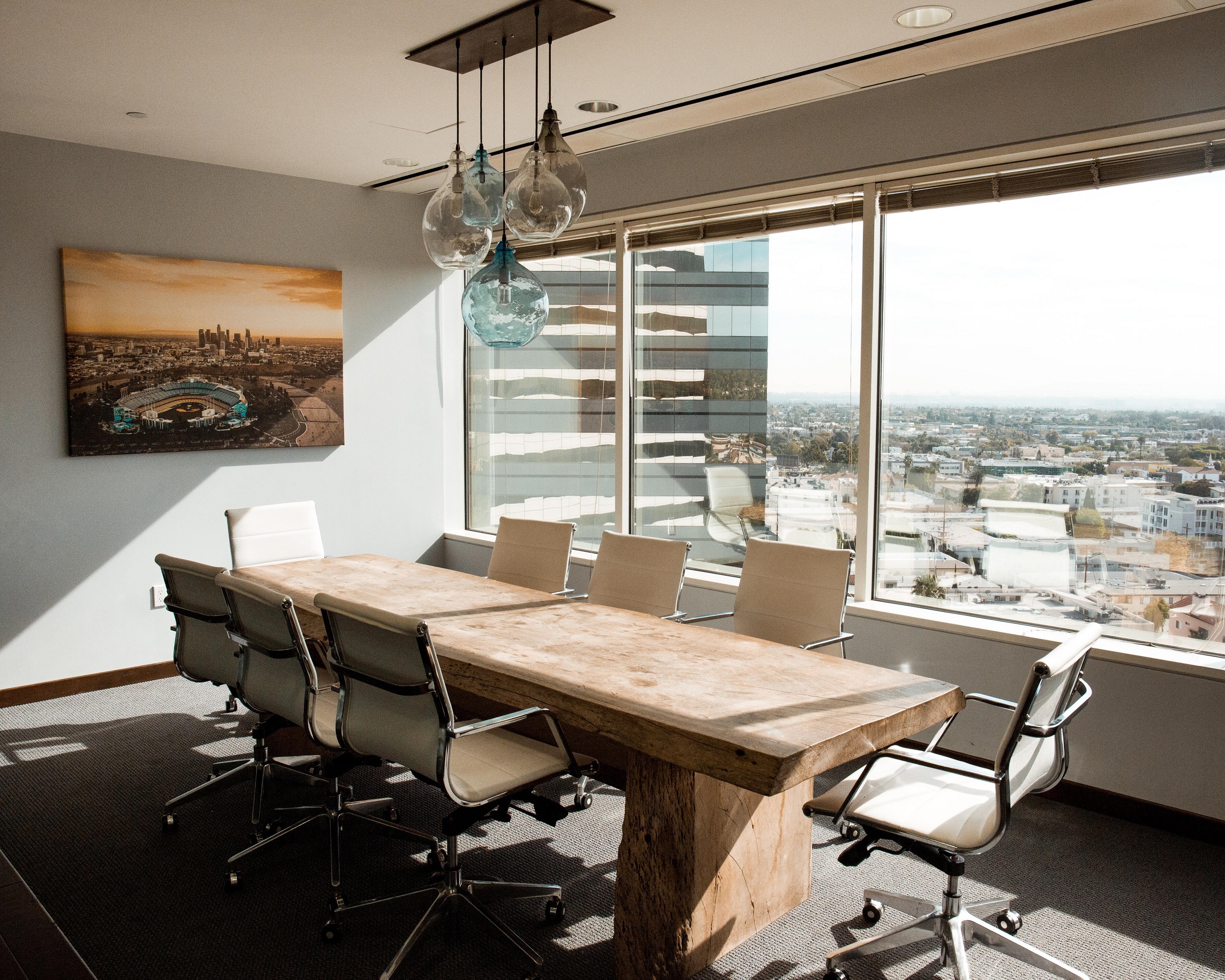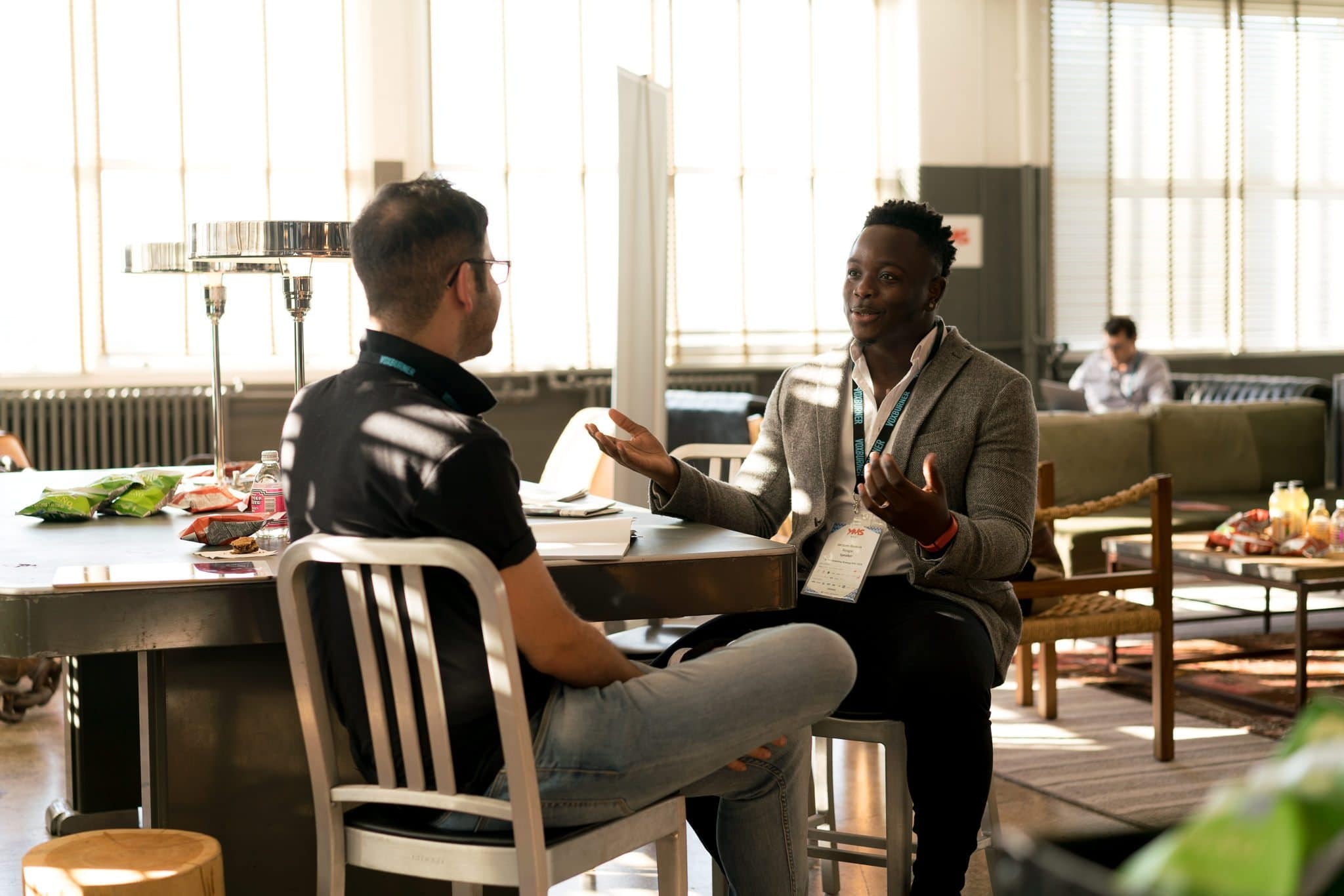Pictured Above: Minter Ellison’s Sydney Office, Designed by BVN (Photo: BVN)
Open layouts, unassigned seating, big comfortable cafes and cafeterias, natural light and collaborative areas. These could describe a wide variety of workplaces today, from Google and other tech companies to trendy communication and media firms. These design features are now taking hold in perhaps the most unlikely of places. The Law office.
While the approach proliferated out of tech into a variety of other industries, law firms had historically held strong with partner offices signifying the culmination of a long career. This is all now changing and for the junior partner and associates coming up- the corner office may soon be an aspiration even harder, if not impossible to achieve.
Where it started

Herbert Smith Freehills Sydney Office Designed by Bill Dowzer of BVN (Photo: BVN)
The approach was first adopted at a wide scale in Australia. In part led by the economics of reducing real estate, along with drawing talent and following suit from their clients, numerous firms in Syndey and Melbourne began to shift towards more open offices. In 2013, Corrs Chambers Westgarth was one of the earliest adopters of a more open office. They did away with private offices and moved partners into workstations with hotdesks available for lawyers from other offices and other visitors.
Australian firms that have bought into the open office include Gilbert + Tobin, where CEO Danny Gilbert was the first to suggest moving out of his office to try an open office plan. Others have now adopted the approach and are implementing various hybrid layouts with less offices or smaller offices and finding ways to make the changes work for everyone.
And making it work they are. The designs and layouts are so compelling that when Marc-André Blanchard, CEO of McCarthy Tétrault LLP saw them, he knew it was time for a change back home.
Growing in North America

McCarthy Tétrault’s Quebec City Office Designed by BVN (Photo: BVN)
When Blanchard got back he had the firm’s COO Tracie Crook determine how the concept could be recreated in Canada. Bill Dowzer of BVN designed the Austalian offices (he now actually specializes in transforming law offices and the way that firms work) and was enlisted to start work on the McCarthy’s project. Changes were first implemented at their Quebec and Vancouver Offices and McCarthy’s is now looking at potential rollouts in their Toronto and Montreal offices.
Across the Border other law firms are beginning to make the change as well. Principle at Gensler LA, Barbara Dunn notes that it’s actually something more firms in the US are beginning to look at. Where no one would have seriously been considering it years ago she believes that when relocations and redesigns start to happen, its something that law firms will look at.
Perhaps one of the most successful implementations of the open office is Washington DC firm Nixon Peabody’s renovation of their office, which coincided with a brand refresh. The firm eliminated corner offices in favour of collaborative areas. Other features include a large green wall on a central and open staircase between floors, and large communal cafeterias on each floor.
In determining whether the open office law firm can last though, it’s important to look at challenges that exist as well as the driving forces behind this change.
Challenges

Nixon Peabody’s Washington D.C. Office, Designed by Perkins+Will (Photo: Perkins+Will)
Hierarchy
Addressing the hierarchy issue means that there has to be buy in from the top down, like in the case of Gilbert + Tobin or McCarthy Tétrault where the CEO’s and COO bought into the program and spearheaded it. Bill Dowzer, the expert on transforming the way lawyers work acknowledges this, “there are some people who will never change because the law profession is so rooted in the hierarchical world”. What can help is having an open conversation with employees and moving to a hybrid system first like McCarthy’s did.
Earlier this year, the National Law Journal reported that Reed Smith was one of the first AM 100 law firms to move to a hotelling system. The program saw partners giving up their offices in return for hot desks. When Reed Smith began testing their open layout, some partners weren’t willing to give up their offices while others volunteered. The trick is not forcing everyone to adopt the approach.
Technology
Using the right technology is important for success of these layouts as well.
Tracie Crook, COO of McCarthy’s notes that open design is actually better for creating a more flexible and technologically innovative workstations. But the right technology needs to be in place. Crooks is a proponent of using technology itself to create flexibility by letting lawyers choose whatever technology works best for them: smartphones, laptops, tablets, video-conferencing, paper or more.
It’s something that Dowzer believes as well, noting that in addition to more collaborative areas, spaces should incorporate technology that can help employees collaborate digitally.
Paper Use
There are some drawbacks and pain points that arise from having to deal with reducing paper. But this issue also present an opportunity. With regards to paper reduction – digitization and password protection can actually help privacy and security vs. having files out in the open. Digitizing files may also show employees that they may not require as many. It feeds into space savings and reduces paper clutter.
Benefits

McCarthy Tétrault’s Vancouver Office, the firm’s second office designed by Bill Dowzer and his firm BVN (Photo: McCarthy Tétrault Vancouver)
Real Estate Cost Savings
Real estate experts like CBRE and Cushman and Wakefield are touting hotelling as the future. When looking at the utilization rates within the space, it’s hard to not make a change. Reed’s tracking data showed that 30% of employees were not in the office on a regular basis.
McCarthy’s for example, as a result of the new configuration, reduced its real estate footprint by 25% in Vancouver and 16% in Quebec City.
Collaboration
Open staircases and layouts help foster more interaction and idea sharing. From the client perspective more collaboration is a good thing as well. Sven Milelli, Managing Partner, BC Region for McCarthy’s notes that collaboration is crucial for law firm survival. Just as clients are working more collaboratively they expect to see the same from their law firms for increased efficiencies. They appreciate the fact that more collaboration can mean greater coordination between legal groups where possible.
Attracting the Lawyers of the Future
Its no secret that lawyers are pulling extremely long hours so features like more open and inviting cafeterias and cafes make sense. Lawyers can come and grab a coffee, snack or even dinner and get work done on a laptop while in the space. This plays a role in attracting some top prospects to a firm. It also keeps existing employees happier and more productive.
Dowzer notes on the changing workplace that “Younger people are demanding access to senior colleagues for mentoring and growth, and individual space is being swapped for shared community spaces where people come together”. Open spaces and more visibility across and between floors gives junior partners and associates greater ease of access to the mentors they want to emulate. There’s a unique potential for mentorship that becomes possible in these types of systems.



